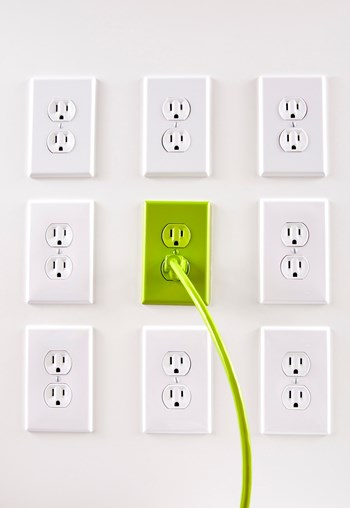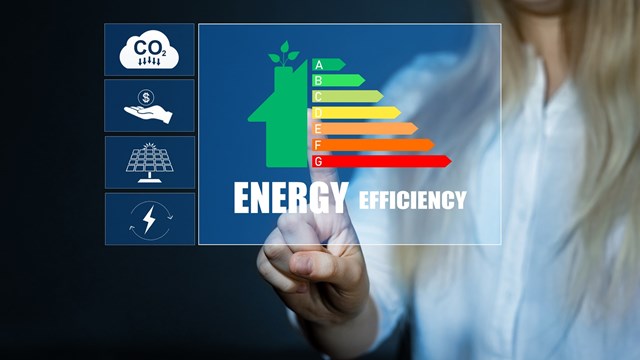
Winterizing a condo or co-op is important every year, but with energy prices soaring, it's going to be especially important to keep your buildings protected from the elements—and your equipment running at its best—as the cold months approach in 2005. The nearly $3 a gallon we're paying at the gas pump is going to translate into higher energy costs this winter.
According to Mike Ruff of Intellidyne, a Glen Cove company that manufactures energy-saving equipment for heating, air conditioning and commercial refrigeration systems, energy prices for this winter have been projected to be 30 to 35 percent higher than they were a year ago—and those figures were suggested well before Hurricane Katrina laid waste to the Gulf Coast's oil drilling and refinery operations. As the true scope of the destruction in the Gulf becomes clearer, tri-state homeowners may find their energy bills much higher than even the most pessimistic analysts have suggested.
"And that's assuming we have the same winter we had last year, which was actually pretty mild," Ruff says. "So it could be very painful this year for building owners and operators who have fixed revenue streams and don't get extra money for heating. Obviously, their oil and gas is going to cost a heck of a lot more this winter than it did last winter."
But the (relatively) good news is that there are steps and investments you can take now to absorb at least some of the financial hit Old Man Winter is going to be dealing us in a few months.
Keeping Boilers Running
One of the most important parts of winterizing is making sure your building's boiler is ready to operate properly throughout the long winter. The first step, according to Andrew Talkow of Manhattan Welding Co. Inc. in Hillside, is making sure your boiler's fireside is thoroughly cleaned.
"The purpose of cleaning the fireside portion of your boiler is to remove soot that has accumulated over the past seasons of operation," Talkow says, adding that if the soot isn't removed it can act as an insulator, which hinders the flow of heat. According to Talkow, tests show that just one-eighth of an inch of soot in the boiler can affect its efficiency by 16 percent.
"When a boiler is dirty, it [has to] burn that much more fuel to keep your building warm," Talkow says, adding that too much soot can also cause the boiler to overheat, causing damage to the boiler and posing a safety risk to the building.
The waterside of the boiler has to be cleaned as well. This removes scale, sediment and mud, which Talkow says are like soot to the fireside. Failing to clean these out can result in weakening the boiler.
Also imperative is having your oil or gas burner cleaned and adjusted by a reputable service company. Talkow says items to be checked during this cleaning include flame impingement, filters, electrodes, gas valves, oil valves, regulators, belts, motors and combustion efficiency.
And the time to do this is now—not when it starts to get chilly outside. Getting your boiler in running condition in the late summer or early fall assures you'll get an appointment before the winter, and also allows time for any repairs that may need to be done.
"You should always do a major cleaning of the boiler in the summertime," says Michael Sandler of Scientific Boiler Environmental in Brooklyn, New York. "You should also take care of any leaking tubes or valves. To prepare for winter, you should do this months and months in advance."
Boilers should also be checked throughout the winter by building owners or maintenance staff for any escaping flue gases. Talkow suggests waving your hand around the edges of the boiler doors and openings carefully to see if you feel any emissions. If you discover any escaping gases, call your boiler company right away. Visual checks for water and steam leaks are also important. Again, contact your boiler contractor in the event a leak is discovered.
A New Way to Heat and Save
There are also new technologies that claim to improve the way your boiler runs, keeping buildings more comfortable and saving money in the process. Intellidyne produces a control that according to Ruff reduces the output of the system when the demand for heat is not at a maximum.
"Heating systems, particularly the older systems, were basically designed and sized for the worst-case scenario," Ruff says. "So if you think of the coldest day in January with the wind blowing, the system was designed to be able to satisfy the heat requirement for that particular day. In this part of the country, and most of the northeast, that occurs about three to five percent of the time. The rest of the time the boiler is oversized for the application. What our control does is reduce the output of the oversized boiler to properly match the demand that is being placed on the system."
In other words, the difference between setting a thermostat at 65 degrees or 70 degrees is how long the system will run at its peak. Intellidyne's system controls the temperature of the water or steam in your boiler to lighten its load during use. The result is also more comfortable air blowing from your boiler.
According to Ruff, the system can be installed within hours, and without having to shut the boiler down. On the most expensive level, installation costs just under $4,000 per boiler. Ruff adds that most buildings see a return on their investment within four to six months.
Again, don't wait long if you're interested. Not only is there the usual demand that comes with winter, but increased energy costs have more and more people looking into these types of technologies. Ruff says it's not impossible that a call placed in mid-October won't yield an appointment until November or even December.
"Associations shouldn't wait too long, because this is going to be a painful winter for a lot of folks, and there is technology available that can help to manage those costs and keep that pain tolerable."
The Great Air Escape
There are other, simpler, measures to take in preparation for the winter. According to Peter Grech of New York Superintendent's Technical Association, there are certain measures your super can take to ensure that warm is staying inside the building.
Grech says you need to look at the "building envelope" and search for areas where heat can escape. He adds that the doors to the roof are probably the number-one area where this happens.
"You have to check the gap between the bottom of the door and the saddle," Grech says, "as well as the gap around the door frame. For a reasonable amount of money, you can weather-strip the door, not only to save money, but to improve the comfort level." Grech adds that the same tactic can be taken with front doors, vestibules, and windows.
Another area to check is the basement, and Grech suggests a method for finding areas where air may be escaping in basements. It's old-fashioned, but according to Grech, it's effective.
"A simple way of [inspecting the basement] is by taking a lit candle down there to check for drafts. If the candle flame moves, then you know air is moving. For individual apartments, you can put a candle by the window—if it's flickering or moving, you know air is getting in. Or you can go with the new way, where you buy an expensive infrared thermometer and see where the heat is escaping."
Getting Out of the Gutter
Another important aspect of winterizing is preparation of gutters. If gutters aren't properly cleaned before the winter, they won't flow properly. And if they don't flow properly, the water that builds up in them can turn to ice, causing excess weight that can result in the gutters pulling away from the building.
"Before the winter, after the leaves fall off the trees, you must have them cleaned, that's a must," says Evan Glaser, owner of Gutter Master in Jackson.
It's also important to make sure the gutters are pitched properly. That's making sure the gutter is at the right angle—or "pitch"—so that the water flows properly to the downspout and away from the building foundation.
"We take it for granted that these are properly installed," Glaser says. "Not all companies use a level when doing a gutter installation. It's very easy to see when you're doing a cleaning whether or not the gutter is pitched properly by evidence of standing water and debris collecting more in a specific area because of that water."
Your gutter contractor should also inspect for any loose nails. If these aren't repaired, the gutter could fall away from the building, not only leaving your building gutter-less, but risking damage to property or people.
Timing is of the essence when it comes to gutters. Unlike other winterizing steps, you can't get your gutters cleaned in September or October and wait for the cold. You need to wait until all leaves have fallen off the trees, but get it done before the real cold weather arrives. Glaser says the ideal time to schedule an appointment is early December, but you do have to act early to get the procedural wheels in motion.
"Your manager should get the bidding process underway by some point in October," Glaser says. "This way, [the board] can have their approval done by the first part of November. Then they can call the company that they're going to go with and get on the schedule before the winter really hits."
Every winter has its headaches, snow, ice, the high cost of heating oil, and there's no way to make these problems disappear. But the right preventative action before all that ice and snow arrives can make the winter a bit more bearable.
Anthony Stoeckert is a freelance writer and a frequent contributor to the New Jersey Cooperator.






Leave a Comment